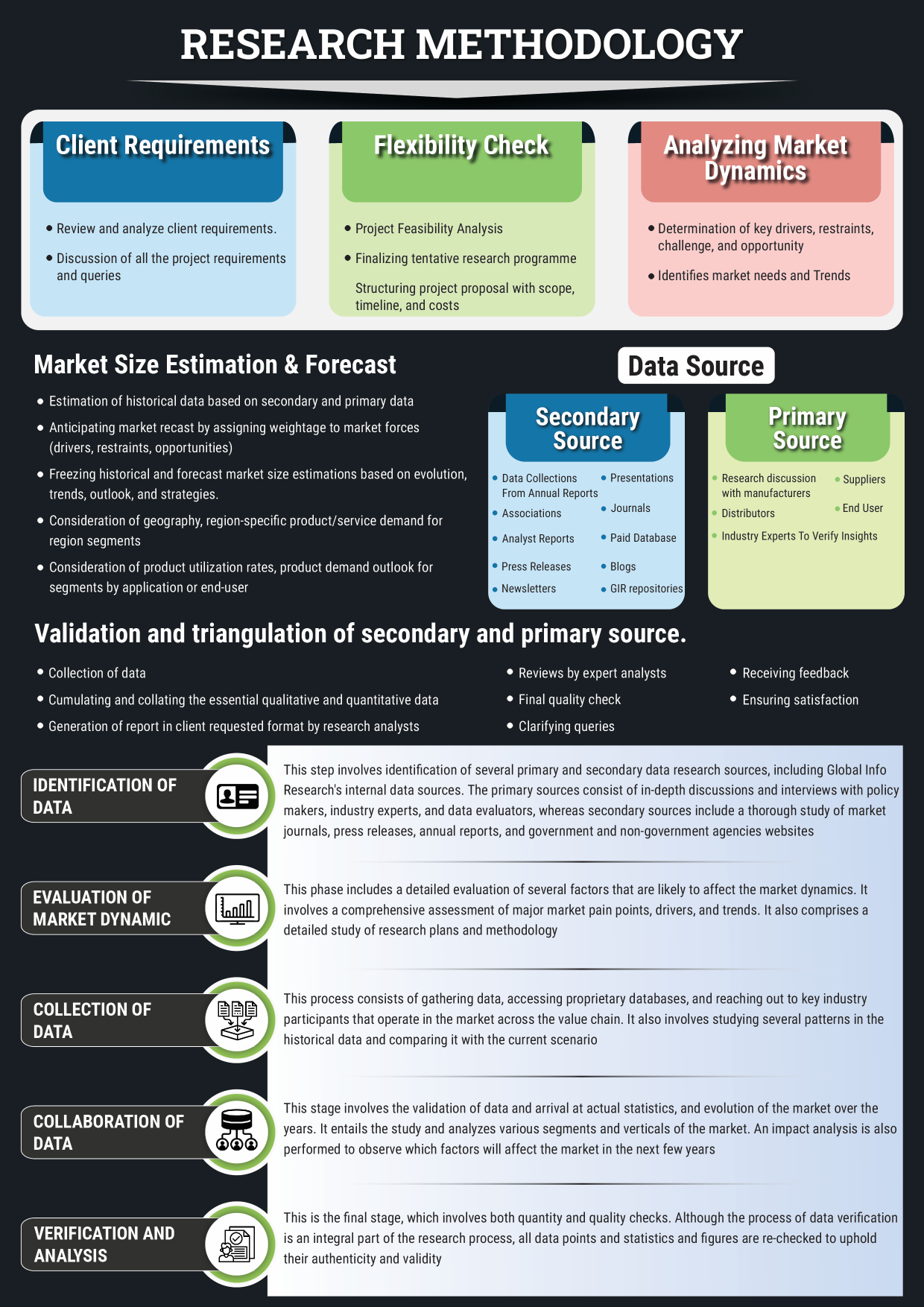Market Outlook
The global Wood Tar Market size was valued at USD 122 million in 2022 and is forecast to a readjusted size of USD 133.1 million by 2029 with a CAGR of 1.2% during review period.
Introduction: Why the Wood Tar Market Matters in 2025
The Wood Tar Market in 2025 is witnessing significant growth, driven by increasing demand for natural and sustainable raw materials across multiple industries. Wood tar, produced through the pyrolysis of wood, is prized for its antiseptic, insecticidal, and waterproofing properties. Its traditional uses in medicine, agriculture, and construction are being revitalized amid rising consumer awareness about eco-friendly alternatives. As industries shift focus to greener solutions, wood tar’s multifunctional nature positions it as a valuable ingredient. This market growth is especially relevant for manufacturers, investors, and research clients aiming to capitalize on sustainable product trends.
Market Drivers: What's Fueling the Wood Tar Market Expansion?
Increasing Use in Pharmaceuticals and Personal Care
Wood tar’s effectiveness in treating skin conditions such as psoriasis, eczema, and fungal infections is driving renewed interest in pharmaceutical and cosmetic formulations. Consumers favor natural treatments, boosting demand for wood tar-based ointments, shampoos, and soaps.Growing Adoption in Agriculture
The eco-friendly insecticidal and fungicidal properties of wood tar support its rising application in organic farming and animal health. Farmers are increasingly adopting wood tar as a natural alternative to chemical pesticides, aligning with sustainable agricultural practices.Construction and Industrial Applications
Wood tar’s waterproofing and preservative qualities are essential in wood protection, roofing materials, and marine coatings. As infrastructure development continues globally, demand for durable, natural construction materials supports market growth.Sustainability and Consumer Preference
The global shift towards reducing synthetic chemicals and plastic pollution reinforces wood tar’s appeal as a biodegradable, renewable resource. This environmental awareness is motivating manufacturers to integrate wood tar into eco-friendly product lines.
Innovation in Focus: How Manufacturers Are Enhancing Wood Tar Products
Eco-Conscious Production Techniques
Modern pyrolysis processes are being optimized to increase yield while lowering emissions and energy consumption. These advances improve the environmental footprint of wood tar manufacturing.Product Development and Diversification
Manufacturers are expanding wood tar applications by developing specialized grades and blends suited for cosmetics, veterinary medicines, organic pesticides, and natural preservatives. This diversification opens new revenue streams.Quality Assurance and Standardization
Efforts to standardize wood tar quality and purity enhance safety and regulatory compliance, fostering greater confidence among end-users in pharmaceuticals and food-grade products.Packaging and Logistics Enhancements
Innovative packaging solutions improve product shelf life and ease of handling, ensuring efficient distribution across international markets.
Regional Breakdown: Where the Wood Tar Market is Growing Fastest
Europe
Europe remains a key market, supported by its strong tradition of wood tar use and stringent regulations promoting green and natural products. High demand in pharmaceuticals and organic agriculture drives steady growth.Asia-Pacific (APAC)
APAC is the fastest-growing region due to rapid industrialization, rising awareness of natural health products, and expanding agricultural sectors. China, India, and Southeast Asian countries are investing in susainable raw materials.North America
North America shows increasing interest in wood tar for natural personal care, organic farming, and sustainable building materials. Growing environmental consciousness among consumers accelerates market adoption.Latin America and Middle East & Africa (MEA)
These regions offer emerging opportunities, with growing investments in agriculture and natural health sectors creating fresh demand for wood tar products.
Strategic Considerations: How to Succeed in the Wood Tar Market 2025
Commit to Sustainability
Adopt green manufacturing standards and obtain eco-certifications to meet evolving regulatory requirements and consumer expectations.Broaden Product Applications
Invest in R&D to unlock new uses in sectors like organic pesticides, veterinary medicine, and personal care, thereby expanding your market reach.Optimize Supply Chain Management
Secure reliable wood sourcing and improve logistics to maintain consistent product quality and meet growing global demand efficiently.Educate the Market
Develop marketing campaigns emphasizing wood tar’s natural benefits and safety to overcome hesitation and build consumer trust.Collaborate with Industry Stakeholders
Partner with agricultural cooperatives, pharmaceutical companies, and cosmetic manufacturers to drive innovation and accelerate product adoption.
Conclusion: Wood Tar Market 2025 - A Natural Growth Opportunity
The Wood Tar Market in 2025 is poised for robust expansion, fueled by rising demand for sustainable and natural alternatives in pharmaceuticals, agriculture, and construction. Combining deep-rooted traditional uses with modern innovation, wood tar offers a compelling proposition for manufacturers, investors, and researchers. By aligning production with sustainability, diversifying applications, and strengthening supply chains, stakeholders can capitalize on this niche yet versatile market. With increasing environmental focus worldwide, wood tar stands out as a key ingredient in the evolving global landscape of green raw materials.
Key Market Players
Auson
Skandian Group
Xinzhongxing Biomass
Verdi Life
Kemet
Lacq
Fusheng Carbon
Shuanghui Active Carbon
Albert Kerbl
S.P.S. BV
Eco Oil
Bashles
Segmentation By Type
Resinous Tars
Hardwood Tars
Others
Segmentation By Application
Construction Coatings
Ship Coatings
Animal Husbandry
Others
Segmentation By Region
North America (United States, Canada and Mexico)
Europe (Germany, France, United Kingdom, Russia, Italy, and Rest of Europe)
Asia-Pacific (China, Japan, Korea, India, Southeast Asia, and Australia)
South America (Brazil, Argentina, Colombia, and Rest of South America)
Middle East & Africa (Saudi Arabia, UAE, Egypt, South Africa, and Rest of Middle East & Africa)
Chapter 1, to describe Wood Tar product scope, market overview, market estimation caveats and base year.
Chapter 2, to profile the top manufacturers of Wood Tar, with price, sales, revenue and global market share of Wood Tar from 2018 to 2023.
Chapter 3, the Wood Tar competitive situation, sales quantity, revenue and global market share of top manufacturers are analyzed emphatically by landscape contrast.
Chapter 4, the Wood Tar breakdown data are shown at the regional level, to show the sales quantity, consumption value and growth by regions, from 2018 to 2029.
Chapter 5 and 6, to segment the sales by Type and application, with sales market share and growth rate by type, application, from 2018 to 2029.
Chapter 7, 8, 9, 10 and 11, to break the sales data at the country level, with sales quantity, consumption value and market share for key countries in the world, from 2017 to 2022.and Wood Tar market forecast, by regions, type and application, with sales and revenue, from 2024 to 2029.
Chapter 12, market dynamics, drivers, restraints, trends, Porters Five Forces analysis, and Influence of COVID-19 and Russia-Ukraine War.
Chapter 13, the key raw materials and key suppliers, and industry chain of Wood Tar.
Chapter 14 and 15, to describe Wood Tar sales channel, distributors, customers, research findings and conclusion.
1 Market Overview
1.1 Product Overview and Scope of Wood Tar
1.2 Market Estimation Caveats and Base Year
1.3 Market Analysis by Type
1.3.1 Overview: Global Wood Tar Consumption Value by Type: 2018 Versus 2022 Versus 2029
1.3.2 Resinous Tars
1.3.3 Hardwood Tars
1.3.4 Others
1.4 Market Analysis by Application
1.4.1 Overview: Global Wood Tar Consumption Value by Application: 2018 Versus 2022 Versus 2029
1.4.2 Construction Coatings
1.4.3 Ship Coatings
1.4.4 Animal Husbandry
1.4.5 Others
1.5 Global Wood Tar Market Size & Forecast
1.5.1 Global Wood Tar Consumption Value (2018 & 2022 & 2029)
1.5.2 Global Wood Tar Sales Quantity (2018-2029)
1.5.3 Global Wood Tar Average Price (2018-2029)
2 Manufacturers Profiles
2.1 Auson
2.1.1 Auson Details
2.1.2 Auson Major Business
2.1.3 Auson Wood Tar Product and Services
2.1.4 Auson Wood Tar Sales Quantity, Average Price, Revenue, Gross Margin and Market Share (2018-2023)
2.1.5 Auson Recent Developments/Updates
2.2 Skandian Group
2.2.1 Skandian Group Details
2.2.2 Skandian Group Major Business
2.2.3 Skandian Group Wood Tar Product and Services
2.2.4 Skandian Group Wood Tar Sales Quantity, Average Price, Revenue, Gross Margin and Market Share (2018-2023)
2.2.5 Skandian Group Recent Developments/Updates
2.3 Xinzhongxing Biomass
2.3.1 Xinzhongxing Biomass Details
2.3.2 Xinzhongxing Biomass Major Business
2.3.3 Xinzhongxing Biomass Wood Tar Product and Services
2.3.4 Xinzhongxing Biomass Wood Tar Sales Quantity, Average Price, Revenue, Gross Margin and Market Share (2018-2023)
2.3.5 Xinzhongxing Biomass Recent Developments/Updates
2.4 Verdi Life
2.4.1 Verdi Life Details
2.4.2 Verdi Life Major Business
2.4.3 Verdi Life Wood Tar Product and Services
2.4.4 Verdi Life Wood Tar Sales Quantity, Average Price, Revenue, Gross Margin and Market Share (2018-2023)
2.4.5 Verdi Life Recent Developments/Updates
2.5 Kemet
2.5.1 Kemet Details
2.5.2 Kemet Major Business
2.5.3 Kemet Wood Tar Product and Services
2.5.4 Kemet Wood Tar Sales Quantity, Average Price, Revenue, Gross Margin and Market Share (2018-2023)
2.5.5 Kemet Recent Developments/Updates
2.6 Lacq
2.6.1 Lacq Details
2.6.2 Lacq Major Business
2.6.3 Lacq Wood Tar Product and Services
2.6.4 Lacq Wood Tar Sales Quantity, Average Price, Revenue, Gross Margin and Market Share (2018-2023)
2.6.5 Lacq Recent Developments/Updates
2.7 Fusheng Carbon
2.7.1 Fusheng Carbon Details
2.7.2 Fusheng Carbon Major Business
2.7.3 Fusheng Carbon Wood Tar Product and Services
2.7.4 Fusheng Carbon Wood Tar Sales Quantity, Average Price, Revenue, Gross Margin and Market Share (2018-2023)
2.7.5 Fusheng Carbon Recent Developments/Updates
2.8 Shuanghui Active Carbon
2.8.1 Shuanghui Active Carbon Details
2.8.2 Shuanghui Active Carbon Major Business
2.8.3 Shuanghui Active Carbon Wood Tar Product and Services
2.8.4 Shuanghui Active Carbon Wood Tar Sales Quantity, Average Price, Revenue, Gross Margin and Market Share (2018-2023)
2.8.5 Shuanghui Active Carbon Recent Developments/Updates
2.9 Albert Kerbl
2.9.1 Albert Kerbl Details
2.9.2 Albert Kerbl Major Business
2.9.3 Albert Kerbl Wood Tar Product and Services
2.9.4 Albert Kerbl Wood Tar Sales Quantity, Average Price, Revenue, Gross Margin and Market Share (2018-2023)
2.9.5 Albert Kerbl Recent Developments/Updates
2.10 S.P.S. BV
2.10.1 S.P.S. BV Details
2.10.2 S.P.S. BV Major Business
2.10.3 S.P.S. BV Wood Tar Product and Services
2.10.4 S.P.S. BV Wood Tar Sales Quantity, Average Price, Revenue, Gross Margin and Market Share (2018-2023)
2.10.5 S.P.S. BV Recent Developments/Updates
2.11 Eco Oil
2.11.1 Eco Oil Details
2.11.2 Eco Oil Major Business
2.11.3 Eco Oil Wood Tar Product and Services
2.11.4 Eco Oil Wood Tar Sales Quantity, Average Price, Revenue, Gross Margin and Market Share (2018-2023)
2.11.5 Eco Oil Recent Developments/Updates
2.12 Bashles
2.12.1 Bashles Details
2.12.2 Bashles Major Business
2.12.3 Bashles Wood Tar Product and Services
2.12.4 Bashles Wood Tar Sales Quantity, Average Price, Revenue, Gross Margin and Market Share (2018-2023)
2.12.5 Bashles Recent Developments/Updates
3 Competitive Environment: Wood Tar by Manufacturer
3.1 Global Wood Tar Sales Quantity by Manufacturer (2018-2023)
3.2 Global Wood Tar Revenue by Manufacturer (2018-2023)
3.3 Global Wood Tar Average Price by Manufacturer (2018-2023)
3.4 Market Share Analysis (2022)
3.4.1 Producer Shipments of Wood Tar by Manufacturer Revenue ($MM) and Market Share (%): 2022
3.4.2 Top 3 Wood Tar Manufacturer Market Share in 2022
3.4.2 Top 6 Wood Tar Manufacturer Market Share in 2022
3.5 Wood Tar Market: Overall Company Footprint Analysis
3.5.1 Wood Tar Market: Region Footprint
3.5.2 Wood Tar Market: Company Product Type Footprint
3.5.3 Wood Tar Market: Company Product Application Footprint
3.6 New Market Entrants and Barriers to Market Entry
3.7 Mergers, Acquisition, Agreements, and Collaborations
4 Consumption Analysis by Region
4.1 Global Wood Tar Market Size by Region
4.1.1 Global Wood Tar Sales Quantity by Region (2018-2029)
4.1.2 Global Wood Tar Consumption Value by Region (2018-2029)
4.1.3 Global Wood Tar Average Price by Region (2018-2029)
4.2 North America Wood Tar Consumption Value (2018-2029)
4.3 Europe Wood Tar Consumption Value (2018-2029)
4.4 Asia-Pacific Wood Tar Consumption Value (2018-2029)
4.5 South America Wood Tar Consumption Value (2018-2029)
4.6 Middle East and Africa Wood Tar Consumption Value (2018-2029)
5 Market Segment by Type
5.1 Global Wood Tar Sales Quantity by Type (2018-2029)
5.2 Global Wood Tar Consumption Value by Type (2018-2029)
5.3 Global Wood Tar Average Price by Type (2018-2029)
6 Market Segment by Application
6.1 Global Wood Tar Sales Quantity by Application (2018-2029)
6.2 Global Wood Tar Consumption Value by Application (2018-2029)
6.3 Global Wood Tar Average Price by Application (2018-2029)
7 North America
7.1 North America Wood Tar Sales Quantity by Type (2018-2029)
7.2 North America Wood Tar Sales Quantity by Application (2018-2029)
7.3 North America Wood Tar Market Size by Country
7.3.1 North America Wood Tar Sales Quantity by Country (2018-2029)
7.3.2 North America Wood Tar Consumption Value by Country (2018-2029)
7.3.3 United States Market Size and Forecast (2018-2029)
7.3.4 Canada Market Size and Forecast (2018-2029)
7.3.5 Mexico Market Size and Forecast (2018-2029)
8 Europe
8.1 Europe Wood Tar Sales Quantity by Type (2018-2029)
8.2 Europe Wood Tar Sales Quantity by Application (2018-2029)
8.3 Europe Wood Tar Market Size by Country
8.3.1 Europe Wood Tar Sales Quantity by Country (2018-2029)
8.3.2 Europe Wood Tar Consumption Value by Country (2018-2029)
8.3.3 Germany Market Size and Forecast (2018-2029)
8.3.4 France Market Size and Forecast (2018-2029)
8.3.5 United Kingdom Market Size and Forecast (2018-2029)
8.3.6 Russia Market Size and Forecast (2018-2029)
8.3.7 Italy Market Size and Forecast (2018-2029)
9 Asia-Pacific
9.1 Asia-Pacific Wood Tar Sales Quantity by Type (2018-2029)
9.2 Asia-Pacific Wood Tar Sales Quantity by Application (2018-2029)
9.3 Asia-Pacific Wood Tar Market Size by Region
9.3.1 Asia-Pacific Wood Tar Sales Quantity by Region (2018-2029)
9.3.2 Asia-Pacific Wood Tar Consumption Value by Region (2018-2029)
9.3.3 China Market Size and Forecast (2018-2029)
9.3.4 Japan Market Size and Forecast (2018-2029)
9.3.5 Korea Market Size and Forecast (2018-2029)
9.3.6 India Market Size and Forecast (2018-2029)
9.3.7 Southeast Asia Market Size and Forecast (2018-2029)
9.3.8 Australia Market Size and Forecast (2018-2029)
10 South America
10.1 South America Wood Tar Sales Quantity by Type (2018-2029)
10.2 South America Wood Tar Sales Quantity by Application (2018-2029)
10.3 South America Wood Tar Market Size by Country
10.3.1 South America Wood Tar Sales Quantity by Country (2018-2029)
10.3.2 South America Wood Tar Consumption Value by Country (2018-2029)
10.3.3 Brazil Market Size and Forecast (2018-2029)
10.3.4 Argentina Market Size and Forecast (2018-2029)
11 Middle East & Africa
11.1 Middle East & Africa Wood Tar Sales Quantity by Type (2018-2029)
11.2 Middle East & Africa Wood Tar Sales Quantity by Application (2018-2029)
11.3 Middle East & Africa Wood Tar Market Size by Country
11.3.1 Middle East & Africa Wood Tar Sales Quantity by Country (2018-2029)
11.3.2 Middle East & Africa Wood Tar Consumption Value by Country (2018-2029)
11.3.3 Turkey Market Size and Forecast (2018-2029)
11.3.4 Egypt Market Size and Forecast (2018-2029)
11.3.5 Saudi Arabia Market Size and Forecast (2018-2029)
11.3.6 South Africa Market Size and Forecast (2018-2029)
12 Market Dynamics
12.1 Wood Tar Market Drivers
12.2 Wood Tar Market Restraints
12.3 Wood Tar Trends Analysis
12.4 Porters Five Forces Analysis
12.4.1 Threat of New Entrants
12.4.2 Bargaining Power of Suppliers
12.4.3 Bargaining Power of Buyers
12.4.4 Threat of Substitutes
12.4.5 Competitive Rivalry
12.5 Influence of COVID-19 and Russia-Ukraine War
12.5.1 Influence of COVID-19
12.5.2 Influence of Russia-Ukraine War
13 Raw Material and Industry Chain
13.1 Raw Material of Wood Tar and Key Manufacturers
13.2 Manufacturing Costs Percentage of Wood Tar
13.3 Wood Tar Production Process
13.4 Wood Tar Industrial Chain
14 Shipments by Distribution Channel
14.1 Sales Channel
14.1.1 Direct to End-User
14.1.2 Distributors
14.2 Wood Tar Typical Distributors
14.3 Wood Tar Typical Customers
15 Research Findings and Conclusion
16 Appendix
16.1 Methodology
16.2 Research Process and Data Source
16.3 Disclaimer
List of Tables
Table 1. Global Wood Tar Consumption Value by Type, (USD Million), 2018 & 2022 & 2029
Table 2. Global Wood Tar Consumption Value by Application, (USD Million), 2018 & 2022 & 2029
Table 3. Auson Basic Information, Manufacturing Base and Competitors
Table 4. Auson Major Business
Table 5. Auson Wood Tar Product and Services
Table 6. Auson Wood Tar Sales Quantity (K MT), Average Price (USD/MT), Revenue (USD Million), Gross Margin and Market Share (2018-2023)
Table 7. Auson Recent Developments/Updates
Table 8. Skandian Group Basic Information, Manufacturing Base and Competitors
Table 9. Skandian Group Major Business
Table 10. Skandian Group Wood Tar Product and Services
Table 11. Skandian Group Wood Tar Sales Quantity (K MT), Average Price (USD/MT), Revenue (USD Million), Gross Margin and Market Share (2018-2023)
Table 12. Skandian Group Recent Developments/Updates
Table 13. Xinzhongxing Biomass Basic Information, Manufacturing Base and Competitors
Table 14. Xinzhongxing Biomass Major Business
Table 15. Xinzhongxing Biomass Wood Tar Product and Services
Table 16. Xinzhongxing Biomass Wood Tar Sales Quantity (K MT), Average Price (USD/MT), Revenue (USD Million), Gross Margin and Market Share (2018-2023)
Table 17. Xinzhongxing Biomass Recent Developments/Updates
Table 18. Verdi Life Basic Information, Manufacturing Base and Competitors
Table 19. Verdi Life Major Business
Table 20. Verdi Life Wood Tar Product and Services
Table 21. Verdi Life Wood Tar Sales Quantity (K MT), Average Price (USD/MT), Revenue (USD Million), Gross Margin and Market Share (2018-2023)
Table 22. Verdi Life Recent Developments/Updates
Table 23. Kemet Basic Information, Manufacturing Base and Competitors
Table 24. Kemet Major Business
Table 25. Kemet Wood Tar Product and Services
Table 26. Kemet Wood Tar Sales Quantity (K MT), Average Price (USD/MT), Revenue (USD Million), Gross Margin and Market Share (2018-2023)
Table 27. Kemet Recent Developments/Updates
Table 28. Lacq Basic Information, Manufacturing Base and Competitors
Table 29. Lacq Major Business
Table 30. Lacq Wood Tar Product and Services
Table 31. Lacq Wood Tar Sales Quantity (K MT), Average Price (USD/MT), Revenue (USD Million), Gross Margin and Market Share (2018-2023)
Table 32. Lacq Recent Developments/Updates
Table 33. Fusheng Carbon Basic Information, Manufacturing Base and Competitors
Table 34. Fusheng Carbon Major Business
Table 35. Fusheng Carbon Wood Tar Product and Services
Table 36. Fusheng Carbon Wood Tar Sales Quantity (K MT), Average Price (USD/MT), Revenue (USD Million), Gross Margin and Market Share (2018-2023)
Table 37. Fusheng Carbon Recent Developments/Updates
Table 38. Shuanghui Active Carbon Basic Information, Manufacturing Base and Competitors
Table 39. Shuanghui Active Carbon Major Business
Table 40. Shuanghui Active Carbon Wood Tar Product and Services
Table 41. Shuanghui Active Carbon Wood Tar Sales Quantity (K MT), Average Price (USD/MT), Revenue (USD Million), Gross Margin and Market Share (2018-2023)
Table 42. Shuanghui Active Carbon Recent Developments/Updates
Table 43. Albert Kerbl Basic Information, Manufacturing Base and Competitors
Table 44. Albert Kerbl Major Business
Table 45. Albert Kerbl Wood Tar Product and Services
Table 46. Albert Kerbl Wood Tar Sales Quantity (K MT), Average Price (USD/MT), Revenue (USD Million), Gross Margin and Market Share (2018-2023)
Table 47. Albert Kerbl Recent Developments/Updates
Table 48. S.P.S. BV Basic Information, Manufacturing Base and Competitors
Table 49. S.P.S. BV Major Business
Table 50. S.P.S. BV Wood Tar Product and Services
Table 51. S.P.S. BV Wood Tar Sales Quantity (K MT), Average Price (USD/MT), Revenue (USD Million), Gross Margin and Market Share (2018-2023)
Table 52. S.P.S. BV Recent Developments/Updates
Table 53. Eco Oil Basic Information, Manufacturing Base and Competitors
Table 54. Eco Oil Major Business
Table 55. Eco Oil Wood Tar Product and Services
Table 56. Eco Oil Wood Tar Sales Quantity (K MT), Average Price (USD/MT), Revenue (USD Million), Gross Margin and Market Share (2018-2023)
Table 57. Eco Oil Recent Developments/Updates
Table 58. Bashles Basic Information, Manufacturing Base and Competitors
Table 59. Bashles Major Business
Table 60. Bashles Wood Tar Product and Services
Table 61. Bashles Wood Tar Sales Quantity (K MT), Average Price (USD/MT), Revenue (USD Million), Gross Margin and Market Share (2018-2023)
Table 62. Bashles Recent Developments/Updates
Table 63. Global Wood Tar Sales Quantity by Manufacturer (2018-2023) & (K MT)
Table 64. Global Wood Tar Revenue by Manufacturer (2018-2023) & (USD Million)
Table 65. Global Wood Tar Average Price by Manufacturer (2018-2023) & (USD/MT)
Table 66. Market Position of Manufacturers in Wood Tar, (Tier 1, Tier 2, and Tier 3), Based on Consumption Value in 2022
Table 67. Head Office and Wood Tar Production Site of Key Manufacturer
Table 68. Wood Tar Market: Company Product Type Footprint
Table 69. Wood Tar Market: Company Product Application Footprint
Table 70. Wood Tar New Market Entrants and Barriers to Market Entry
Table 71. Wood Tar Mergers, Acquisition, Agreements, and Collaborations
Table 72. Global Wood Tar Sales Quantity by Region (2018-2023) & (K MT)
Table 73. Global Wood Tar Sales Quantity by Region (2024-2029) & (K MT)
Table 74. Global Wood Tar Consumption Value by Region (2018-2023) & (USD Million)
Table 75. Global Wood Tar Consumption Value by Region (2024-2029) & (USD Million)
Table 76. Global Wood Tar Average Price by Region (2018-2023) & (USD/MT)
Table 77. Global Wood Tar Average Price by Region (2024-2029) & (USD/MT)
Table 78. Global Wood Tar Sales Quantity by Type (2018-2023) & (K MT)
Table 79. Global Wood Tar Sales Quantity by Type (2024-2029) & (K MT)
Table 80. Global Wood Tar Consumption Value by Type (2018-2023) & (USD Million)
Table 81. Global Wood Tar Consumption Value by Type (2024-2029) & (USD Million)
Table 82. Global Wood Tar Average Price by Type (2018-2023) & (USD/MT)
Table 83. Global Wood Tar Average Price by Type (2024-2029) & (USD/MT)
Table 84. Global Wood Tar Sales Quantity by Application (2018-2023) & (K MT)
Table 85. Global Wood Tar Sales Quantity by Application (2024-2029) & (K MT)
Table 86. Global Wood Tar Consumption Value by Application (2018-2023) & (USD Million)
Table 87. Global Wood Tar Consumption Value by Application (2024-2029) & (USD Million)
Table 88. Global Wood Tar Average Price by Application (2018-2023) & (USD/MT)
Table 89. Global Wood Tar Average Price by Application (2024-2029) & (USD/MT)
Table 90. North America Wood Tar Sales Quantity by Type (2018-2023) & (K MT)
Table 91. North America Wood Tar Sales Quantity by Type (2024-2029) & (K MT)
Table 92. North America Wood Tar Sales Quantity by Application (2018-2023) & (K MT)
Table 93. North America Wood Tar Sales Quantity by Application (2024-2029) & (K MT)
Table 94. North America Wood Tar Sales Quantity by Country (2018-2023) & (K MT)
Table 95. North America Wood Tar Sales Quantity by Country (2024-2029) & (K MT)
Table 96. North America Wood Tar Consumption Value by Country (2018-2023) & (USD Million)
Table 97. North America Wood Tar Consumption Value by Country (2024-2029) & (USD Million)
Table 98. Europe Wood Tar Sales Quantity by Type (2018-2023) & (K MT)
Table 99. Europe Wood Tar Sales Quantity by Type (2024-2029) & (K MT)
Table 100. Europe Wood Tar Sales Quantity by Application (2018-2023) & (K MT)
Table 101. Europe Wood Tar Sales Quantity by Application (2024-2029) & (K MT)
Table 102. Europe Wood Tar Sales Quantity by Country (2018-2023) & (K MT)
Table 103. Europe Wood Tar Sales Quantity by Country (2024-2029) & (K MT)
Table 104. Europe Wood Tar Consumption Value by Country (2018-2023) & (USD Million)
Table 105. Europe Wood Tar Consumption Value by Country (2024-2029) & (USD Million)
Table 106. Asia-Pacific Wood Tar Sales Quantity by Type (2018-2023) & (K MT)
Table 107. Asia-Pacific Wood Tar Sales Quantity by Type (2024-2029) & (K MT)
Table 108. Asia-Pacific Wood Tar Sales Quantity by Application (2018-2023) & (K MT)
Table 109. Asia-Pacific Wood Tar Sales Quantity by Application (2024-2029) & (K MT)
Table 110. Asia-Pacific Wood Tar Sales Quantity by Region (2018-2023) & (K MT)
Table 111. Asia-Pacific Wood Tar Sales Quantity by Region (2024-2029) & (K MT)
Table 112. Asia-Pacific Wood Tar Consumption Value by Region (2018-2023) & (USD Million)
Table 113. Asia-Pacific Wood Tar Consumption Value by Region (2024-2029) & (USD Million)
Table 114. South America Wood Tar Sales Quantity by Type (2018-2023) & (K MT)
Table 115. South America Wood Tar Sales Quantity by Type (2024-2029) & (K MT)
Table 116. South America Wood Tar Sales Quantity by Application (2018-2023) & (K MT)
Table 117. South America Wood Tar Sales Quantity by Application (2024-2029) & (K MT)
Table 118. South America Wood Tar Sales Quantity by Country (2018-2023) & (K MT)
Table 119. South America Wood Tar Sales Quantity by Country (2024-2029) & (K MT)
Table 120. South America Wood Tar Consumption Value by Country (2018-2023) & (USD Million)
Table 121. South America Wood Tar Consumption Value by Country (2024-2029) & (USD Million)
Table 122. Middle East & Africa Wood Tar Sales Quantity by Type (2018-2023) & (K MT)
Table 123. Middle East & Africa Wood Tar Sales Quantity by Type (2024-2029) & (K MT)
Table 124. Middle East & Africa Wood Tar Sales Quantity by Application (2018-2023) & (K MT)
Table 125. Middle East & Africa Wood Tar Sales Quantity by Application (2024-2029) & (K MT)
Table 126. Middle East & Africa Wood Tar Sales Quantity by Region (2018-2023) & (K MT)
Table 127. Middle East & Africa Wood Tar Sales Quantity by Region (2024-2029) & (K MT)
Table 128. Middle East & Africa Wood Tar Consumption Value by Region (2018-2023) & (USD Million)
Table 129. Middle East & Africa Wood Tar Consumption Value by Region (2024-2029) & (USD Million)
Table 130. Wood Tar Raw Material
Table 131. Key Manufacturers of Wood Tar Raw Materials
Table 132. Wood Tar Typical Distributors
Table 133. Wood Tar Typical Customers
List of Figures
Figure 1. Wood Tar Picture
Figure 2. Global Wood Tar Consumption Value by Type, (USD Million), 2018 & 2022 & 2029
Figure 3. Global Wood Tar Consumption Value Market Share by Type in 2022
Figure 4. Resinous Tars Examples
Figure 5. Hardwood Tars Examples
Figure 6. Others Examples
Figure 7. Global Wood Tar Consumption Value by Application, (USD Million), 2018 & 2022 & 2029
Figure 8. Global Wood Tar Consumption Value Market Share by Application in 2022
Figure 9. Construction Coatings Examples
Figure 10. Ship Coatings Examples
Figure 11. Animal Husbandry Examples
Figure 12. Others Examples
Figure 13. Global Wood Tar Consumption Value, (USD Million): 2018 & 2022 & 2029
Figure 14. Global Wood Tar Consumption Value and Forecast (2018-2029) & (USD Million)
Figure 15. Global Wood Tar Sales Quantity (2018-2029) & (K MT)
Figure 16. Global Wood Tar Average Price (2018-2029) & (USD/MT)
Figure 17. Global Wood Tar Sales Quantity Market Share by Manufacturer in 2022
Figure 18. Global Wood Tar Consumption Value Market Share by Manufacturer in 2022
Figure 19. Producer Shipments of Wood Tar by Manufacturer Sales Quantity ($MM) and Market Share (%): 2021
Figure 20. Top 3 Wood Tar Manufacturer (Consumption Value) Market Share in 2022
Figure 21. Top 6 Wood Tar Manufacturer (Consumption Value) Market Share in 2022
Figure 22. Global Wood Tar Sales Quantity Market Share by Region (2018-2029)
Figure 23. Global Wood Tar Consumption Value Market Share by Region (2018-2029)
Figure 24. North America Wood Tar Consumption Value (2018-2029) & (USD Million)
Figure 25. Europe Wood Tar Consumption Value (2018-2029) & (USD Million)
Figure 26. Asia-Pacific Wood Tar Consumption Value (2018-2029) & (USD Million)
Figure 27. South America Wood Tar Consumption Value (2018-2029) & (USD Million)
Figure 28. Middle East & Africa Wood Tar Consumption Value (2018-2029) & (USD Million)
Figure 29. Global Wood Tar Sales Quantity Market Share by Type (2018-2029)
Figure 30. Global Wood Tar Consumption Value Market Share by Type (2018-2029)
Figure 31. Global Wood Tar Average Price by Type (2018-2029) & (USD/MT)
Figure 32. Global Wood Tar Sales Quantity Market Share by Application (2018-2029)
Figure 33. Global Wood Tar Consumption Value Market Share by Application (2018-2029)
Figure 34. Global Wood Tar Average Price by Application (2018-2029) & (USD/MT)
Figure 35. North America Wood Tar Sales Quantity Market Share by Type (2018-2029)
Figure 36. North America Wood Tar Sales Quantity Market Share by Application (2018-2029)
Figure 37. North America Wood Tar Sales Quantity Market Share by Country (2018-2029)
Figure 38. North America Wood Tar Consumption Value Market Share by Country (2018-2029)
Figure 39. United States Wood Tar Consumption Value and Growth Rate (2018-2029) & (USD Million)
Figure 40. Canada Wood Tar Consumption Value and Growth Rate (2018-2029) & (USD Million)
Figure 41. Mexico Wood Tar Consumption Value and Growth Rate (2018-2029) & (USD Million)
Figure 42. Europe Wood Tar Sales Quantity Market Share by Type (2018-2029)
Figure 43. Europe Wood Tar Sales Quantity Market Share by Application (2018-2029)
Figure 44. Europe Wood Tar Sales Quantity Market Share by Country (2018-2029)
Figure 45. Europe Wood Tar Consumption Value Market Share by Country (2018-2029)
Figure 46. Germany Wood Tar Consumption Value and Growth Rate (2018-2029) & (USD Million)
Figure 47. France Wood Tar Consumption Value and Growth Rate (2018-2029) & (USD Million)
Figure 48. United Kingdom Wood Tar Consumption Value and Growth Rate (2018-2029) & (USD Million)
Figure 49. Russia Wood Tar Consumption Value and Growth Rate (2018-2029) & (USD Million)
Figure 50. Italy Wood Tar Consumption Value and Growth Rate (2018-2029) & (USD Million)
Figure 51. Asia-Pacific Wood Tar Sales Quantity Market Share by Type (2018-2029)
Figure 52. Asia-Pacific Wood Tar Sales Quantity Market Share by Application (2018-2029)
Figure 53. Asia-Pacific Wood Tar Sales Quantity Market Share by Region (2018-2029)
Figure 54. Asia-Pacific Wood Tar Consumption Value Market Share by Region (2018-2029)
Figure 55. China Wood Tar Consumption Value and Growth Rate (2018-2029) & (USD Million)
Figure 56. Japan Wood Tar Consumption Value and Growth Rate (2018-2029) & (USD Million)
Figure 57. Korea Wood Tar Consumption Value and Growth Rate (2018-2029) & (USD Million)
Figure 58. India Wood Tar Consumption Value and Growth Rate (2018-2029) & (USD Million)
Figure 59. Southeast Asia Wood Tar Consumption Value and Growth Rate (2018-2029) & (USD Million)
Figure 60. Australia Wood Tar Consumption Value and Growth Rate (2018-2029) & (USD Million)
Figure 61. South America Wood Tar Sales Quantity Market Share by Type (2018-2029)
Figure 62. South America Wood Tar Sales Quantity Market Share by Application (2018-2029)
Figure 63. South America Wood Tar Sales Quantity Market Share by Country (2018-2029)
Figure 64. South America Wood Tar Consumption Value Market Share by Country (2018-2029)
Figure 65. Brazil Wood Tar Consumption Value and Growth Rate (2018-2029) & (USD Million)
Figure 66. Argentina Wood Tar Consumption Value and Growth Rate (2018-2029) & (USD Million)
Figure 67. Middle East & Africa Wood Tar Sales Quantity Market Share by Type (2018-2029)
Figure 68. Middle East & Africa Wood Tar Sales Quantity Market Share by Application (2018-2029)
Figure 69. Middle East & Africa Wood Tar Sales Quantity Market Share by Region (2018-2029)
Figure 70. Middle East & Africa Wood Tar Consumption Value Market Share by Region (2018-2029)
Figure 71. Turkey Wood Tar Consumption Value and Growth Rate (2018-2029) & (USD Million)
Figure 72. Egypt Wood Tar Consumption Value and Growth Rate (2018-2029) & (USD Million)
Figure 73. Saudi Arabia Wood Tar Consumption Value and Growth Rate (2018-2029) & (USD Million)
Figure 74. South Africa Wood Tar Consumption Value and Growth Rate (2018-2029) & (USD Million)
Figure 75. Wood Tar Market Drivers
Figure 76. Wood Tar Market Restraints
Figure 77. Wood Tar Market Trends
Figure 78. Porters Five Forces Analysis
Figure 79. Manufacturing Cost Structure Analysis of Wood Tar in 2022
Figure 80. Manufacturing Process Analysis of Wood Tar
Figure 81. Wood Tar Industrial Chain
Figure 82. Sales Quantity Channel: Direct to End-User vs Distributors
Figure 83. Direct Channel Pros & Cons
Figure 84. Indirect Channel Pros & Cons
Figure 85. Methodology
Figure 86. Research Process and Data Source











